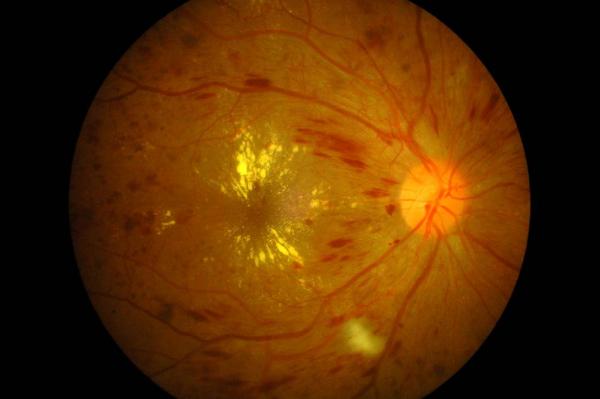
BETHESDA, Md., June 13 (UPI) — Intense treatment of diabetes can help prevent damage to blood vessels in the retina that often leads to blindness, according to a long-term study by the National Institutes of Health.
Researchers used aggressive treatment to maintain glycemic control, blood lipid levels and blood pressure, cutting the risk for developing diabetic retinopathy in half, they reported at the 76th scientific sessions of the American Diabetic Association.
Uncontrolled or severe diabetes starts with micro-aneurisms in the eye or growth of new blood vessels in the eye that can leak, causing damage to sight over time, including blindness.
In the Action to Control Cardiovascular Risk in Diabetes, or ACCORD, study, researchers split participants into groups to test strategies to prevent the condition by aggressively treating either blood sugar levels, blood lipid levels or blood pressure, returning them as close to normal levels as possible.
The researchers stopped the portion focused on glycemic control 3.5 years into a planned 5.6-year test because of an increase in death among participants, though patients being treated for blood pressure and blood lipid levels continued for the rest of the intended test period.
Tight control of the condition improved health of patients, but did not reduce risk for cardiovascular disease. The treatment did, however, reduce the progress of retinopathy by about one-third.
For the new study, published in the journal Diabetes Care, the researchers re-examined 1,310 patients who took part in the original ACCORD study to measure the progression of participants’ retinopathy four years after treatment concluded.
While measures of blood glucose between participants who received intensive and standard care remained similar to the end of the previous study, 5.8 percent of participants had seen advancement in their condition — less than half the 12.7 percent of those receiving standard treatment whose condition progressed.
“This study sends a powerful message to people with type 2 diabetes who worry about losing vision,” Dr. Emily Chew, deputy director of the National Eye Institute’s Division of Epidemiology and Clinical Applications, said in a press release. “Well-controlled glycemia, or blood sugar level, has a positive, measurable, and lasting effect on eye health.”






